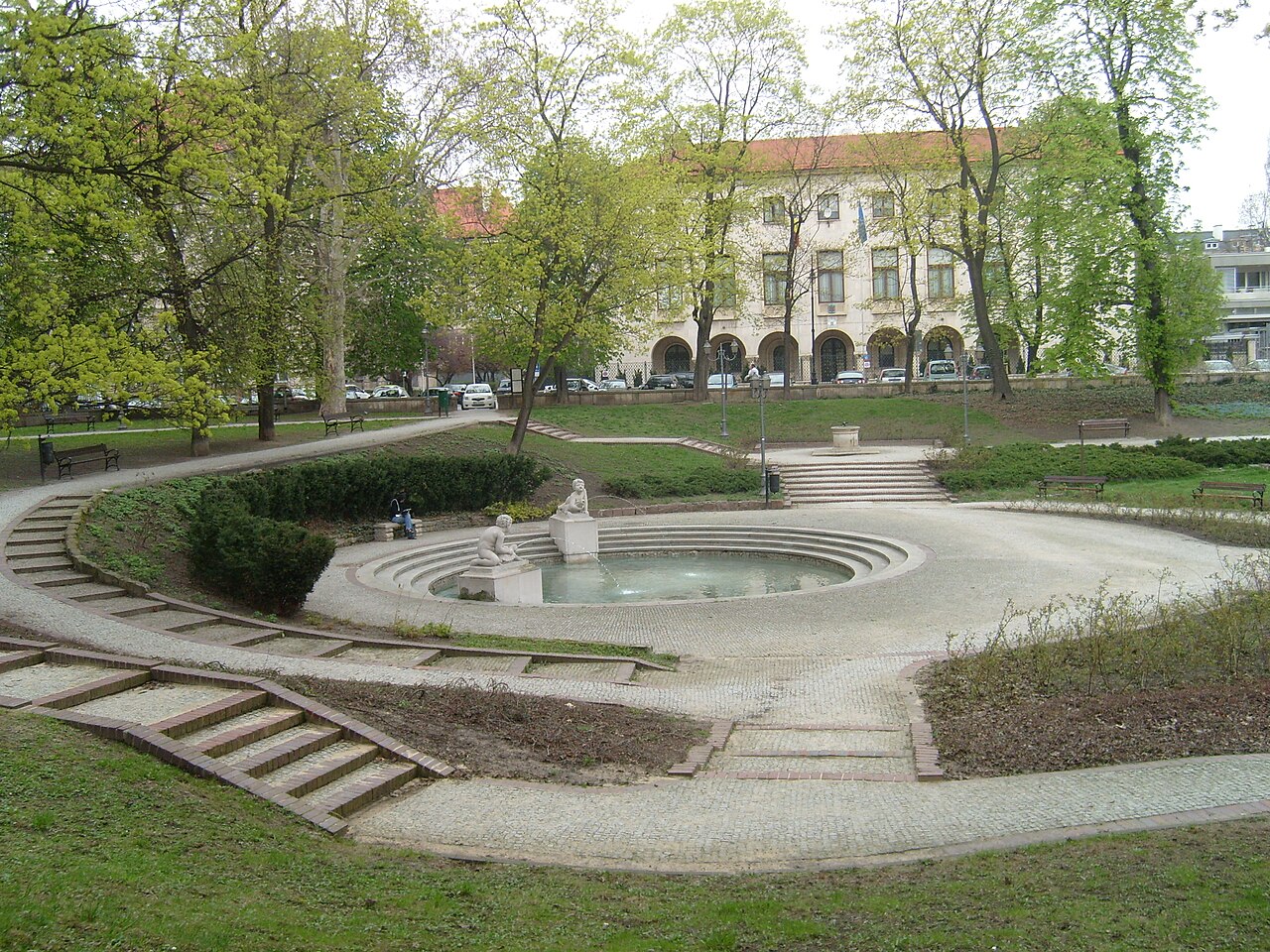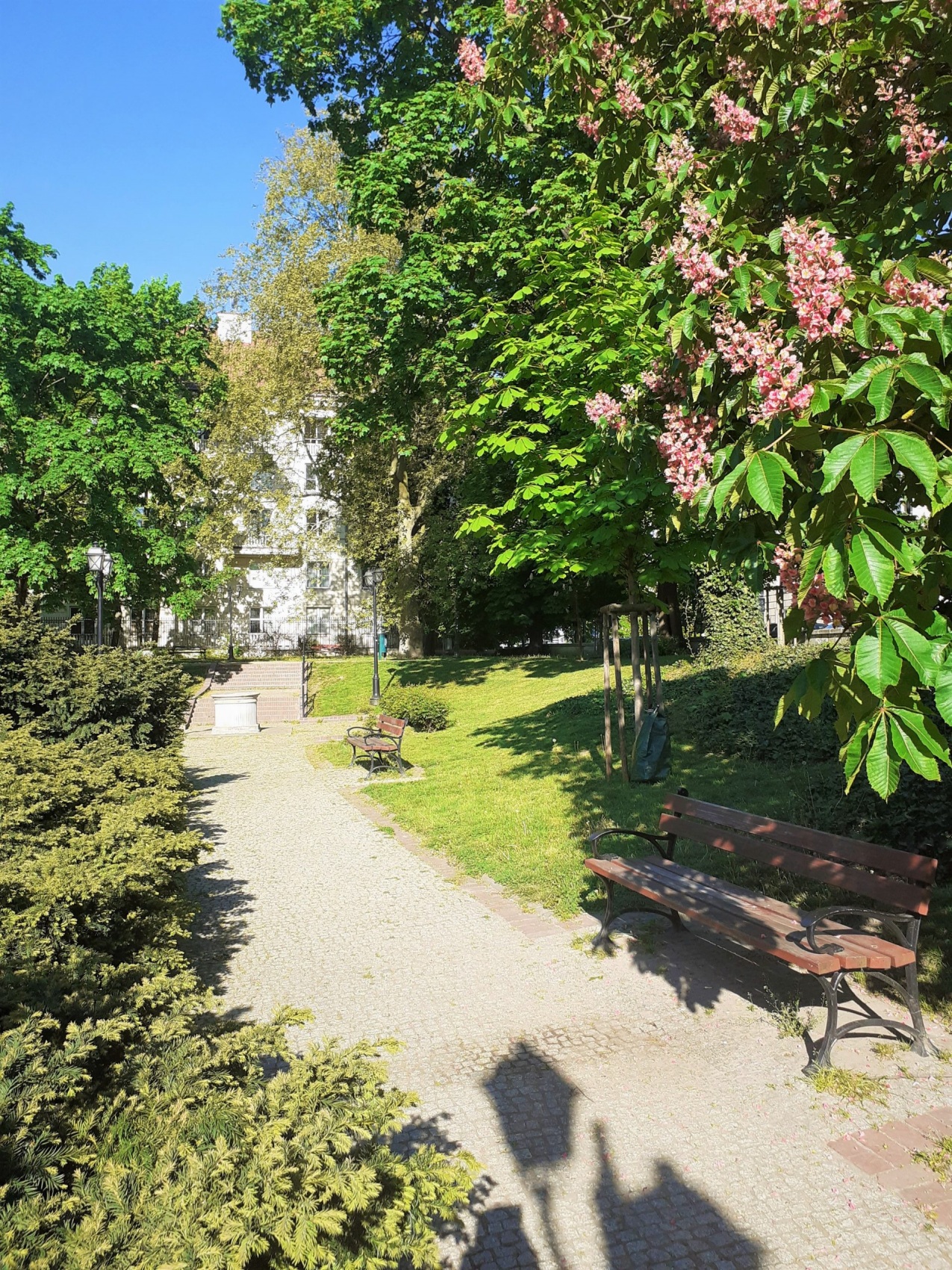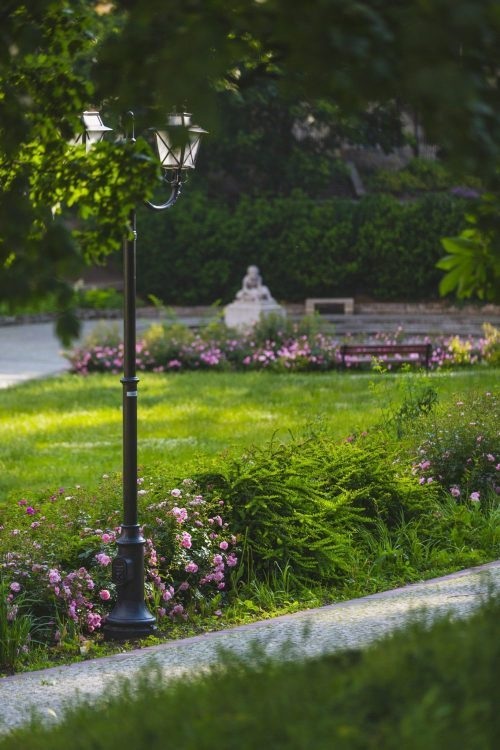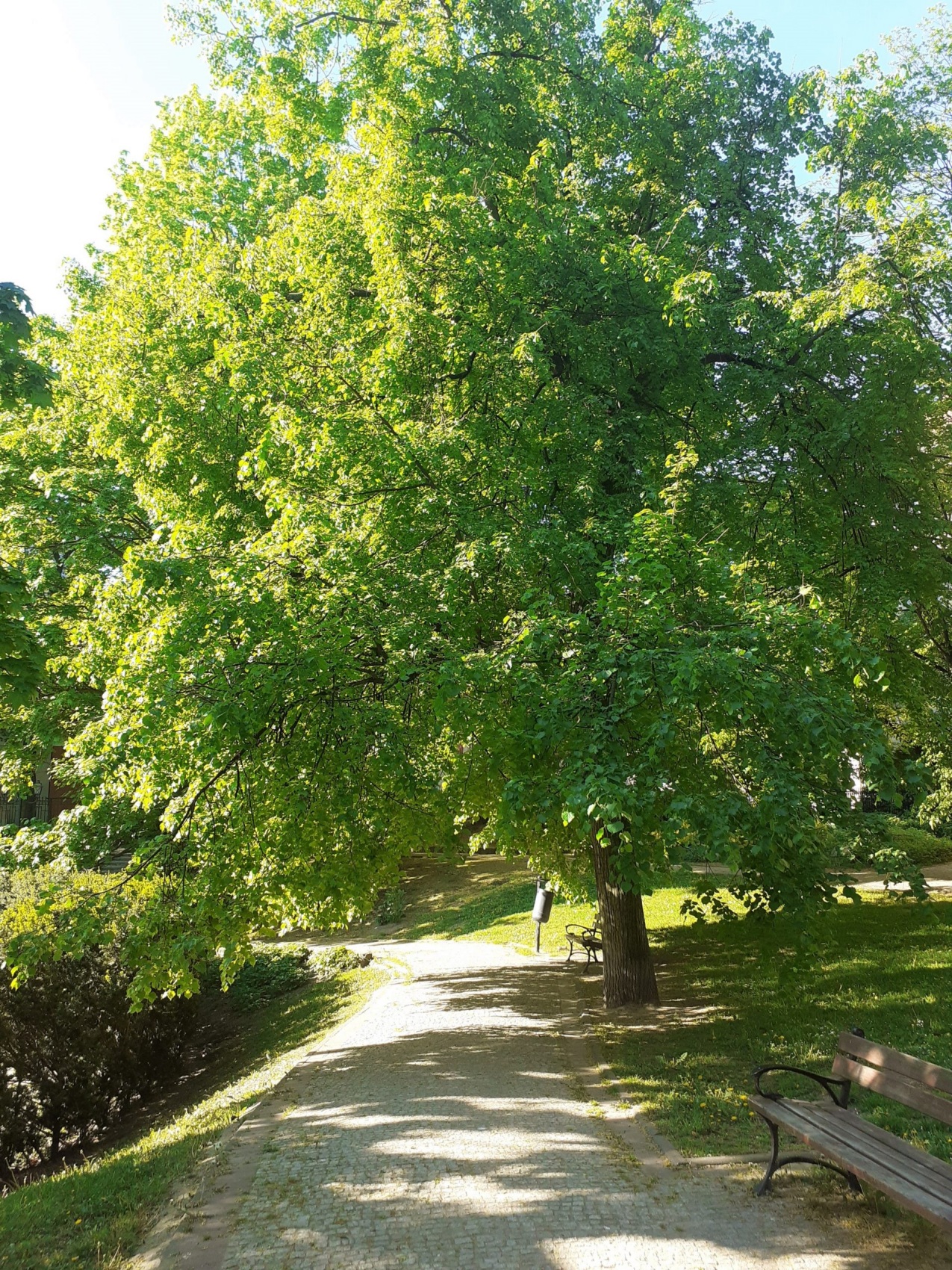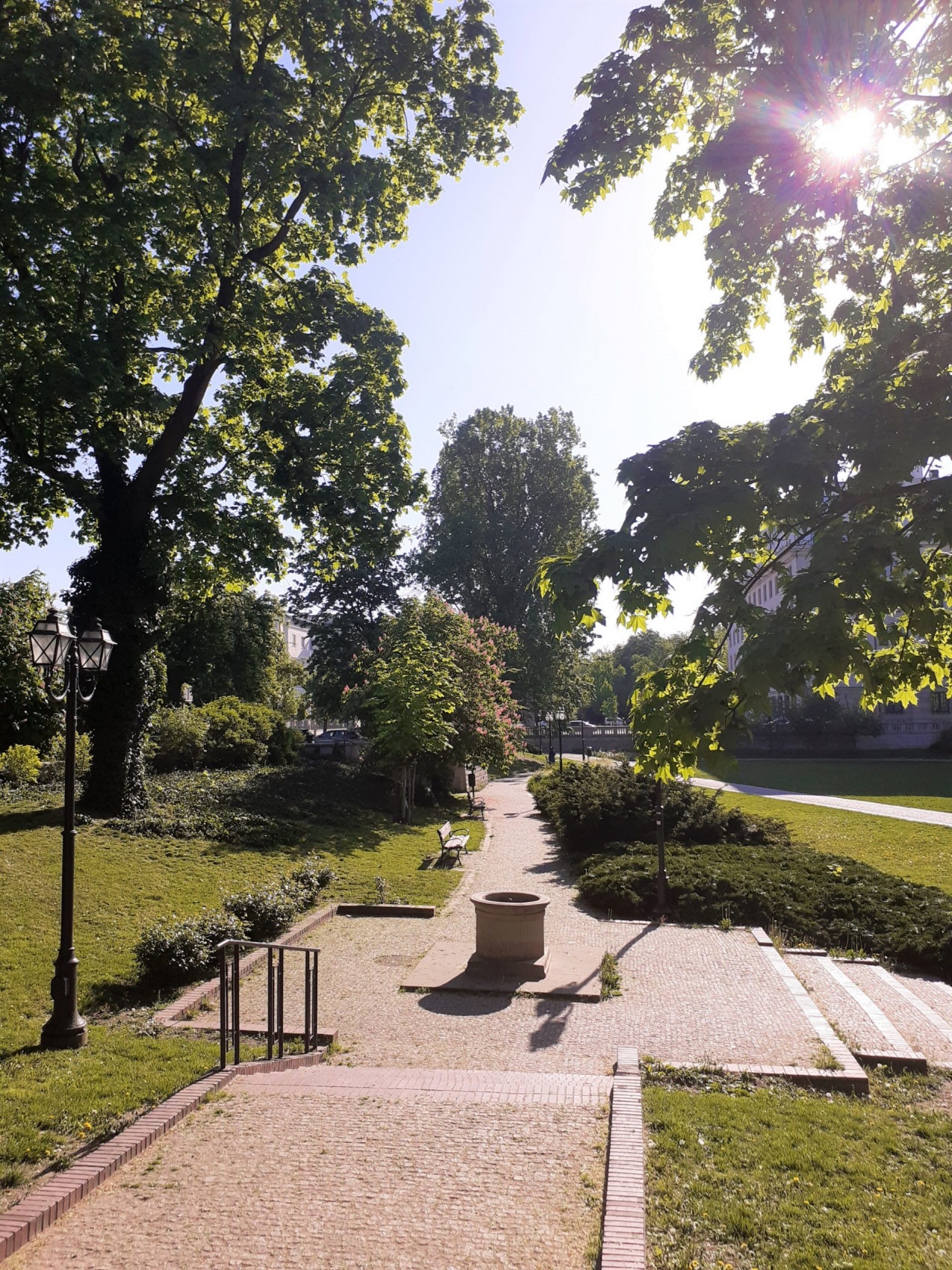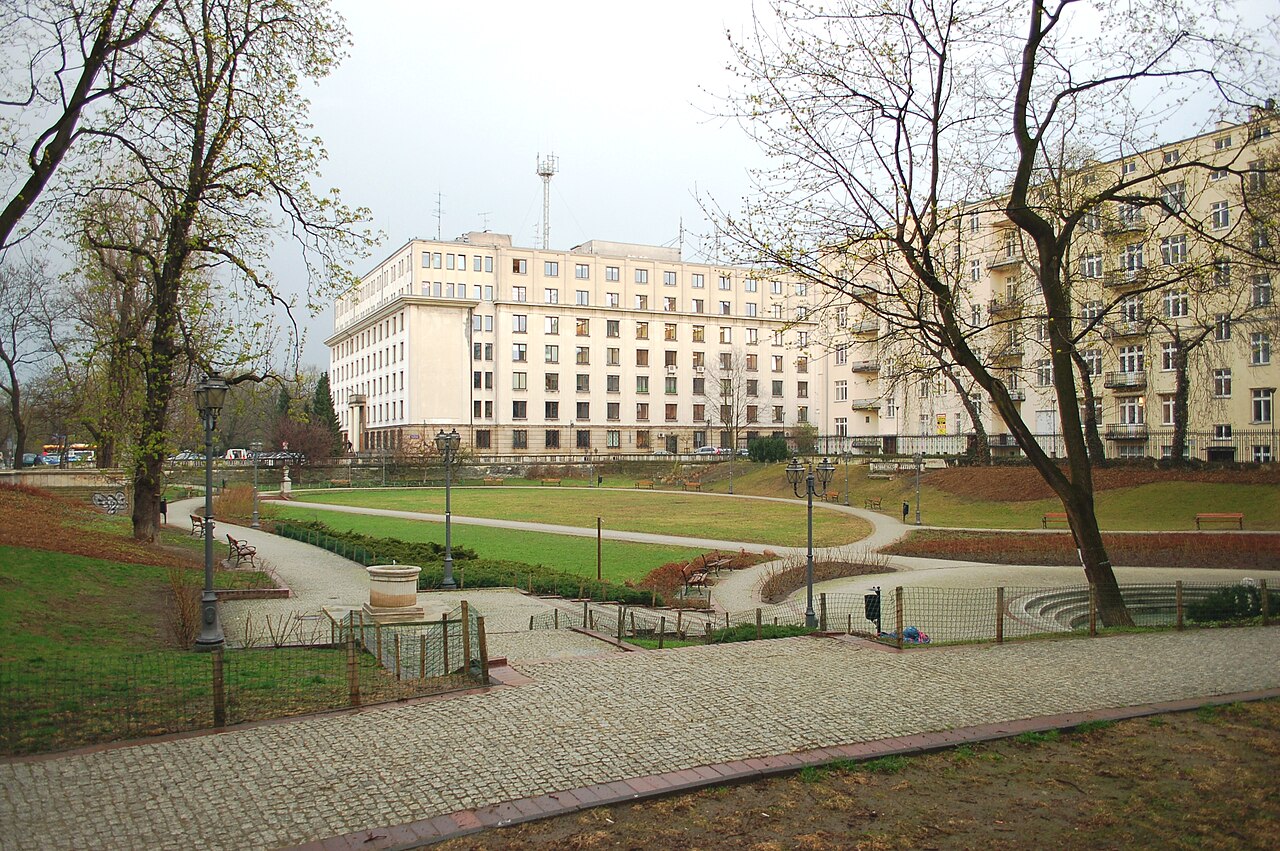This is one of the most picturesque, green places in Warsaw. The Swiss Valley was created in 1786. It has a representative character, influenced by the surroundings of historical buildings. The Mazovian Voivodeship Conservator of Monuments has just entered it in the register of monuments.
The Swiss Valley Park has a rich history. In the 18th century, there were plans to build a church on this site, and even an excavation for the foundations was made. However, the construction never took place.
The first owner of the area was Elżbieta Lubomirska, who sold Ujazdów to King Stanisław August Poniatowski. The king donated the land to the Basilian fathers in 1768. It was they who wanted to build a church here. However, they did not raise enough money to build it, and the work ended with excavation work, which influenced the later shaping of the park, which we can still see today.
In the following decades, the land changed hands. In 1825, it was leased by Stanisław Śleszyński, a sapper captain in the Polish Army, who built a palace at the junction of today’s Piękna Street and Ujazdowskie Avenue. In the same year, the captain established a garden on the remaining land. An attraction for the people of Warsaw at the time were the orchestra concerts organised there.
Captain Śleszyński sold the Swiss Valley in 1852, dividing the area into two parts. The first part with the palace went to Dziechciński couple, and the second one with the garden to Winnicki couple. Just three years later, the largest concert building in Warsaw (the Grand Avenue Saloon) was built next door, designed by Ignacy Esmanowski.
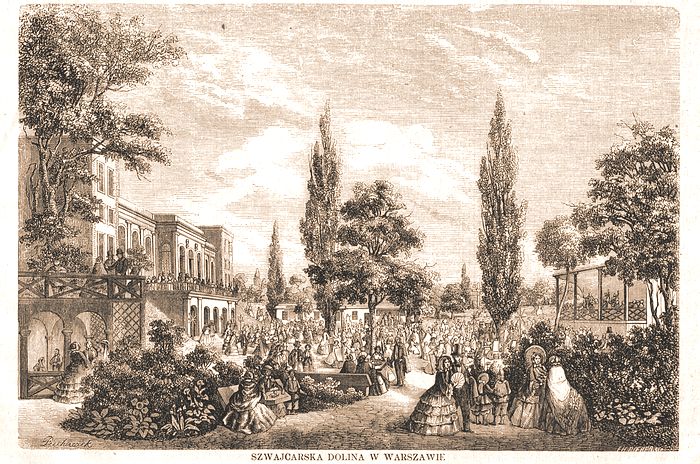
The site was still used for recreation and entertainment. In the 1880s the site was leased by the director of the Salomonsky Summer Circus, shortly afterwards by Konstanty Kuzinski, and from 1895. Warsaw Skating Society and a certain Kożuchowski in order to organise balls, games and competitions. At the end of the 19th century, part of the area was built over and the Avenue of Roses and Chopin Street were laid out.
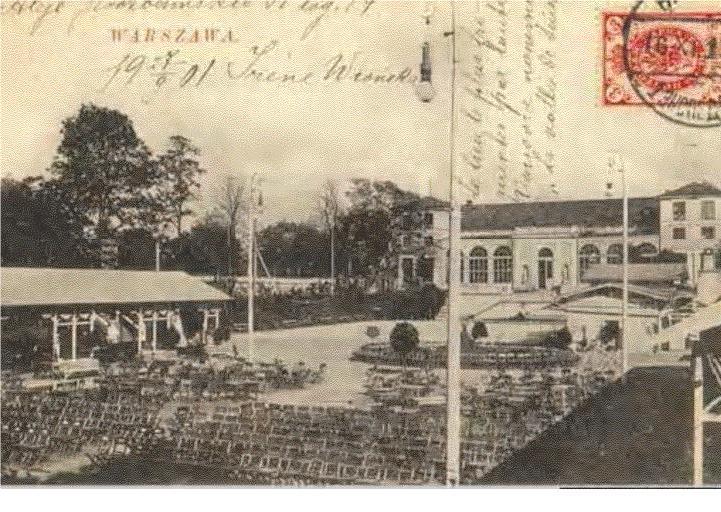
The Swiss Valley was destroyed during the Second World War. Only a few dozen trees survived. After the war, the park was rebuilt according to a design by Zygmunt Stępiński, Władysław Niemirski and Zygmunt Hellwig, and opened in 1950. At that time, the site was decorated with two sculptures by Roman Łukijanow – ‘Boy with a Turtle’ and ‘Boy with a Crocodile’. The sculptures were placed on pedestals in the fountain frame. The Swiss Valley has survived in this form to the present day.
The composition of the Swiss Valley establishment is unique and constitutes an important element of the cultural heritage of both pre- and post-war Warsaw. The park represents great historical and scientific values, both as a subject of research into the history of the Ujazdowskie estate and the spatial transformations of the Southern Downtown. A number of important elements of the composition of the 19th-century and socialist-realist park establishment can be easily identified in the area. The present shape of the Swiss Valley is the result of many turbulent changes over time. At the same time, the elements of the development and park composition created in the 1950s are preserved practically in their entirety, so in this case we are dealing with a double historical and scientific value of the discussed area: as a relic of the original, 19th-century garden establishment and as an almost completely preserved, socialist realist park composition, integrated into the existing structure – informs Prof. Jakub Lewicki, Mazovian Voivodeship Conservator of Monuments.
source: Warsaw Greenery Management, MazovianVoivodeship Conservator of Monuments
Read also: Places, Squares, Parks | Warsaw | Monument | City | History | whiteMAD on Instagram

